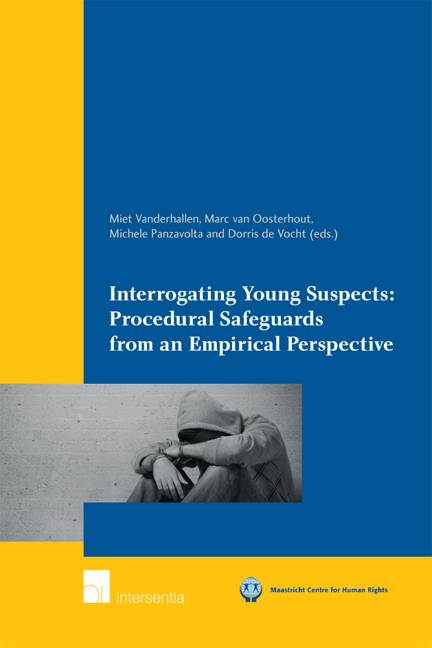Book contents
- Frontmatter
- Preface and Acknowledgements
- Contents
- List of Abbreviations
- Biographies
- Chapter 1 Introduction
- Chapter 2 Research Methodology
- Chapter 3 Belgium: Empirical Findings
- Chapter 4 England and Wales: Empirical Findings
- Chapter 5 Italy: Empirical Findings
- Chapter 6 The Netherlands: Empirical Findings
- Chapter 7 Poland: Empirical Findings
- Chapter 8 Integrated Analysis
- Chapter 9 The Guidelines
- Annexes
- Maastricht Series in Human Rights
Chapter 3 - Belgium: Empirical Findings
Published online by Cambridge University Press: 21 September 2018
- Frontmatter
- Preface and Acknowledgements
- Contents
- List of Abbreviations
- Biographies
- Chapter 1 Introduction
- Chapter 2 Research Methodology
- Chapter 3 Belgium: Empirical Findings
- Chapter 4 England and Wales: Empirical Findings
- Chapter 5 Italy: Empirical Findings
- Chapter 6 The Netherlands: Empirical Findings
- Chapter 7 Poland: Empirical Findings
- Chapter 8 Integrated Analysis
- Chapter 9 The Guidelines
- Annexes
- Maastricht Series in Human Rights
Summary
INTRODUCTION
In Belgium little is known about the practice of interrogating young suspects. Recently, the implementation of the Salduz Act has led to an evaluation study of legal assistance in general but the practice with juveniles remained rather under exposed. That evaluation combined a quantitative and qualitative approach, the latter consisting of interviews with 24 juvenile suspects who were institutionalised in youth detention centres.
The aforementioned ‘Salduz’ motion also gave rise to a study on the expected changes concerning the value of the interrogation of suspects in various European countries. Th at study was funded by the Dutch Research and Documentation Centre (WODC) and – as the research underlying this volume – also involved Belgium, the Netherlands and England and Wales, the latter representing a judicial system with a large tradition in legal advice at the police station. An extended literature study was completed as were focus group interviews with police officers and lawyers. One of the research topics concerned the interrogation of juveniles.
Earlier research focussing specifically on the interrogation of young suspects in Belgium is rather limited, with the exception of a master's thesis in 2009 in which an interrogation model for young suspects was analysed in two interrogations.
Hence, the present study aims to shed more light on what happens in practice when young suspects are being interrogated in Belgium. The first objective is to explore to what extent the practice lives up to the legislation or guidelines. Is there a gap between law in the books and law in action and if so, what does it comprise? The second objective is to look at possible examples of good practice.
These objectives were achieved via focus groups and video-recorded interrogations. Focus groups were held with police officers and lawyers. Unfortunately, the perspective of juveniles who were interrogated as suspects is lacking since a focus group with juveniles could not be arranged due to organisational reform within the institutions. Thus, the findings of the focus groups are not placed against juveniles’ experiences and thus only reflect a partial, legal actor's perspective. The focus group with police officers was attended by eight police officers from six different police stations from federal and local police. Respondents differed with regard to the training they received on interrogation.
- Type
- Chapter
- Information
- Interrogating Young Suspects IIProcedural Safeguards from an Empirical Perspective, pp. 55 - 126Publisher: IntersentiaPrint publication year: 2016
- 1
- Cited by

